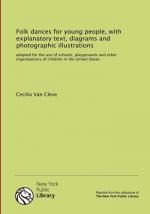|
This section contains 844 words (approx. 3 pages at 300 words per page) |

|
Both mathematics and dance are languages that use symbols to convey ideas and expressions. Mathematics uses written symbols to represent abstractions so that users can arrive at a greater understanding of a problem without ambiguity. Dancers use abstract symbols to represent thoughts, feelings, emotions, and ideas, and these symbols may be interpreted in multiple ways. Both disciplines rely to a large extent on pattern recognition.
Many forms of dance, such as classical ballet, involve complex patterns and take years of practice to master. Yet other forms of dance use everyday movements with more simplistic patterns. For example, folk dances have evolved from common movements of work and play.
Although folk dances require concentration and focus, their use of everyday movement invites observers to participate. Similarly, mathematics can be studied at the basic level of arithmetic, which is used to make simple transactions and to understand how...
|
This section contains 844 words (approx. 3 pages at 300 words per page) |

|


